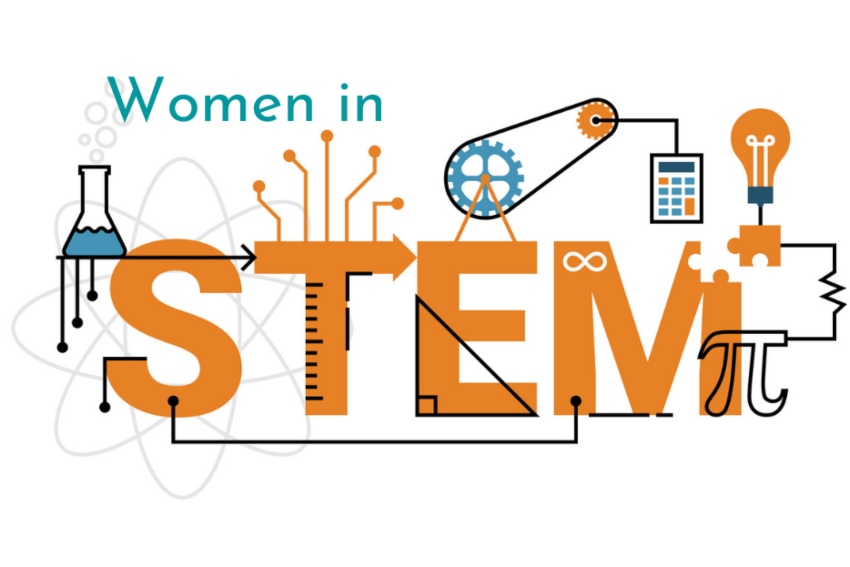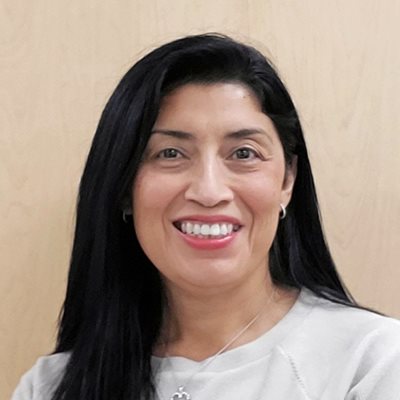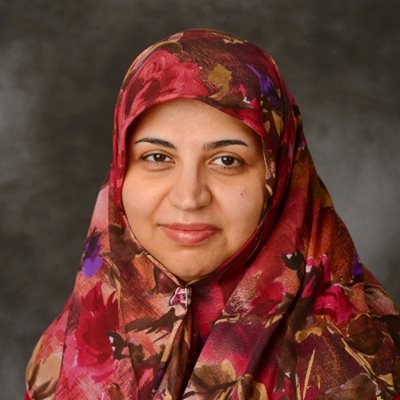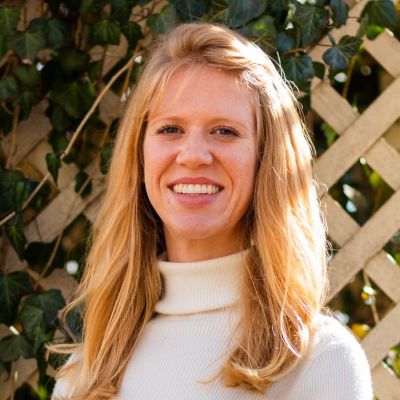31 January 2022
The Adventures (and Challenges) of Being a Woman in STEM
By Kelly Davis
 A recent Pew Research study found that while some STEM (Science, Technology, Math and Science) fields have made progress in attracting more women, there's been uneven growth — even more so when it comes to women of color. It's an unfortunate reality because STEM jobs are in high demand. We spoke with four women working in STEM fields to find out what attracted them to their chosen career and what needs to happen to make jobs in their field more appealing to young women. During these conversations, a couple of themes emerged — the need for more mentorship and support, including for women returning to the workplace later in life — and the misconception that STEM careers don't allow for the creativity women tend to seek in an ideal job. While science, technology, engineering and math all have rules that must be followed, the opportunities for outside-the-box thinking — and fun — are vast and exciting. Or, as biochemist Carla Uranga puts it in describing her career: "It's been a total adventure."
A recent Pew Research study found that while some STEM (Science, Technology, Math and Science) fields have made progress in attracting more women, there's been uneven growth — even more so when it comes to women of color. It's an unfortunate reality because STEM jobs are in high demand. We spoke with four women working in STEM fields to find out what attracted them to their chosen career and what needs to happen to make jobs in their field more appealing to young women. During these conversations, a couple of themes emerged — the need for more mentorship and support, including for women returning to the workplace later in life — and the misconception that STEM careers don't allow for the creativity women tend to seek in an ideal job. While science, technology, engineering and math all have rules that must be followed, the opportunities for outside-the-box thinking — and fun — are vast and exciting. Or, as biochemist Carla Uranga puts it in describing her career: "It's been a total adventure."
Responses have been edited and condensed for clarity.
 Carla Uranga
Carla Uranga
Biochemist
When did you decide you wanted to pursue a career in science?
I went to UCSD as an undergrad, and I went into premed. But after fulfilling the requirements, I took a class called Biochemical Techniques that completely changed my life, my outlook and my goals. We got into molecular cloning in that class, and that was my first experience with taking a gene from one bacteria that made it glow. It's called the lux gene, and we molecularly cloned it into a plasmid and then transformed E. coli with it. And so, basically, we made E. coli glow in the dark, and I was just hooked, absolutely hooked.
My husband actually got deported back in 2008. It was obviously a surprise, but we ended up in Mexico because I didn't want to break our family apart. I ended up going, Okay, well, we're here. You may as well make lemonade out of these lemons. I went back to school and got into this biochemistry program at CICESE in Ensenada, Baja California, and I was amazed. My mind was absolutely blown by the amazing fungi work that's being done in Mexico — because it's huge, especially as related to plant pathology. The place had state-of-the-art facilities for everything that has to do with fungi, and they have a huge collaboration with UC Riverside. So it's been a total adventure. I can't get enough of the art and science of just science — the art and analytical aspects of science, I'm hooked on it.
What are you currently working on?
I just finished a postdoctoral fellowship at the J. Craig Venter Institute, where I really got into bioinformatics and sequencing and microbiome work. Before that, I was working on vaccines. Then this opportunity pops up out of thin air [at the Venter Institute]. I have a thirst for learning, getting more into sequencing and bioinformatics and the computational aspects of it, the coding aspects of it, the developing pipelines aspect of it. So I got fully into that, and we just published another paper that came out last week. It's been a dream. It really has.
Being a woman working in science, have you experienced any obstacles?
Of course. But the nice thing about the study of science is that it gives you that perspective to deal emotionally with these challenges. And it's, like, you have to pick your battles. As a woman of color, I've had people say horrible things to me. It's so hard because a lot of times, people say things that are meant in a funny way, but they don't come off as funny.
I count my blessings and know I'm super blessed, and I am looking for ways to give back, too. I became a teacher; I'm an online biochemistry instructor, and I try to foster scientific debate whenever I can and have people really get into science, right? And teach people where to find scientific literature. So I do what I can.
Tell me about a time when you've had a chance to be creative in your work and think outside the box.
I specialize in the purification of small molecules. I focus a lot of my time on that because it's really challenging, especially if you're purifying something and it's not known what it is. At [the Venter Institute], we had this bacteria that we knew from bioinformatics work was producing a particular compound, but we didn't know what it was. So I had to be creative in the lab in just trying to figure out what to feed the bacteria. That was a whole process in and of itself because these different molecules are produced when the bacteria eat specific types of sugars.
Once we discovered how to induce the bacteria to produce this compound, it was then figuring out how to purify it because you have to purify it to be able to characterize it. And so that was a whole process in and of itself as well.
The creative moments always happen when things stop working, right? You have to accept those challenges and that stress. It's like a mental rollercoaster that you're always on. Sometimes things don't work, and you have to figure out why. And that's when your creativity kicks in. It's interesting the way we work as humans, and I'm still trying to figure it out, of course. But that's the best way I can describe it — it's a rollercoaster, and your creativity comes in when you're on that downhill ride.
Carla Uranga teaches Basic Sciences courses for UCSD Extension.
 Norma Ochoa
Norma Ochoa
Senior DevOps Engineer
What is DevOps?
Before DevOps, there was a huge gap between what [software] developers were doing and what operations was looking for — the operational people are the ones facing the customer, the clients, the users. And they're complaining about, like, Hey, the program doesn't do this. I expected the program to do this. So there was a huge communication gap between what developers were doing versus what the actual users needed. The symbol for DevOps is like infinity going back and forth. It's meant to symbolize that communication, collaboration, responsibility, everything needs to flow from left to right to left. Basically, we all need to be on the same page in a team to help each other and close that communication gap between what's actually in the field versus what's actually being developed.
When did you decide you wanted a career in technology? I was always interested in computers. My stepfather had an Apple IIe computer. I wanted to learn how to type, so I started playing with it, and there was a BASIC programming book that he had. So I started going through the book and teaching myself how to do BASIC. I was so impressed that I could tell the computer how to add numbers and make circles. I became fascinated with that. I learned that in high school by myself and then started looking into more computer classes. When it came down to going to college, I thought, if there's anything I want to do, I think I want to do computers. I was driven by the curiosity of how can they go from a simple BASIC program that is just black and white to, like, Windows? So I became a computer science major, and I'm still very fascinated with the field.
What kind of software have you worked on?
I've worked for the Department of Defense for most of my career. All of it was classified, so I can't get into all the details and stuff we did.
The software can't go down at all. Twenty-for hours, seven days a week, it has to be up and running. A lot of users are involved, multiple clients are involved, and if the software were to go down, I was the first point of contact. My job was to work with different teams and figure out why the system went down and which team was responsible to provide a fix.
Have you encountered any challenges being a woman working in computer science?
I'm not just a woman. I'm also a minority, right? I have an accent. So, to me, it's always been, like, people see me differently. But I don't focus on that. I focus on the work that needs to be done. I like to complete the job. I like to make sure that at the end of the day, if an assignment is given to me or I'm responsible for a team, I want to make sure that we deliver, you know, that I deliver. So I focus on that. In my mind, I am thinking, "what do we need to do? How can we get it done?"
What needs to happen to get more women interested in computer science?
If I could tell a group of women who are deciding if they want to join a STEM field, I would say there are many good reasons to join and to pursue this field because all industries need computers. So you have the option of working in different industries, and each industry has many different specialties within the software industry.
Designing, implementing, and delivering software applications that many people use is also very rewarding and challenging. There are many opportunities to be creative with technical solutions. In addition, technologies constantly change, and you will always be learning new tools and techniques (hence DevOps), so you will never be bored. Also, there's a high demand in this industry. I graduated 20 years ago in computer science. Not even once have I been laid off, not even once was I unemployed.
Norma Ochoa teaches IT Operations and Management courses for UCSD Extension.
 Sima Noghanian
Sima Noghanian
Principal Antenna Design Engineer
When did you decide you wanted to pursue a career in engineering?
I have always liked math. When I was entering high school [in Iran], I had to choose between math, natural sciences or social sciences divisions. I lived in a small city where only one high school for girls offered math division, and it wasn't close to my house. The math and natural sciences had the same first year in high school, so I chose to go to the high school close to my house. When my school principal and teachers saw I was a good student and liked math, they told me that if I could manage to get enough students interested in math division, they would start teaching it. I started asking girls in my class to choose the math option, and I finally managed to get around six to agree. I used to stay in school after hours with my classmates, helping them understand how to do their homework. So that year, not only was I a student, but I was also a teacher.
When I was in the last year of high school, I had to take an entrance exam [for university] and rank my choices between the math, physics or engineering fields. I chose electrical engineering because I was told it required strong math skills and was accepted in the fields of communications and electromagnetics. In my senior year, I had to do a senior design project. I worked with one of the faculty who was an expert in microwave engineering and antenna design, which got me interested. Then I completed my master's and Ph.D. degrees in the antenna design field.
What is antenna design?
In a wired (electrical) system, all the signals are going through wires, which are made of what we call conductors. When you use any wireless device, the signals are going through air or another type of material. For example, you might have an antenna working underwater or implanted inside human tissue, but most of the time, the communication is through the air. You may think that you don't have much control in wireless communication — the signal can go anywhere. What provides the control on signal transfer is the antenna.
To have the best type of communication – or at least make sure that there is an acceptable level of power to provide the communication and we are not losing the signal – it is very important to design an antenna that works for the purpose we are aiming for.
In my work, I study, design, and evaluate different types of antennas to optimally work for the given application. When the signal leaves an antenna and travels through the medium (such as air), it interacts with the medium and surrounding objects. The behavior of the signal as it travels through the material becomes a very complex electromagnetic problem. We use a lot of simulation tools to predict what's going to happen and optimize the antenna design to make sure the requirements are met.
The thing that I like about antenna design is that it requires a lot of creativity in addition to knowing the theoretical background. There is a need to think out of the box and come up with novel ideas. Antenna engineering gives you a lot of freedom to do critical and creative thinking. In addition, the technology we develop helps and influences everyone's life.
What needs to happen to get more women interested in engineering?
The first thing I think should be done is to provide more information about working in STEM fields to girls in middle school and high school. What's the day-to-day life of an engineer or someone in a STEM field? The stereotype is that you're going to either become a university professor or you will have to work [someplace] male-oriented. In some sense, that might be true, but there are so many options that students need to know about. I have seen my friends and colleagues in different STEM fields, and each one of them has an inspiring story. Sharing their stories helps young women see a future in STEM too.
The second thing I think should be done is to provide mentorship during university. I have seen that sometimes female students in engineering do not get the confidence and encouragement they deserve. Those girls who choose to start higher education in STEM fields need mentors, especially in engineering, because they will be the minority.
My third recommendation is to create a professional network for women with STEM degrees. They will need places where they can get the support to accept positions in STEM fields and ask questions without being afraid of being judged. For example, a lot of female engineers might take a leave to take care of their children and family. When they are ready to go back to work, they do not know where to start their job search or how to build their network. Having a support system can help them in any stage of their career.
Sima Noghanian teaches Engineering courses for UCSD Extension.
 Catherine Ross
Catherine Ross
Mathematician
When did you know you wanted to study mathematics?
When I was in third grade, we started homeschooling because my family was large, with five siblings, and we had a huge move, so my mom homeschooled us during that time. And my grandma was helping my mom out. I remember third grade, you're doing your times tables, and it's a lot of foundational mathematics, a lot of memorization. And like any typical kid, I was, like, I hate this. Finally, one day I broke down. My grandma was so patient with me, and I was like, Grandma, I don't need to use math in my life. Why do I need math? I just want to help people. My grandma, she was so patient. I was raised in the church with Christians, and I loved Bible stories, and she was, like, well think of Joseph — she was just grabbing at things — I'm sure he had to use math to help all those people. And I was, like, oh, math could maybe help people because that's what I want to do.
Have you faced any challenges being a woman in a STEM field?
When I was 15, I started going to Mira Costa college to study math. I think it was Calculus 2, and all of a sudden, I had this realization in the middle of class that I was surrounded by men. I had a split-second freak-out moment of, like, What am I doing here? And then I was like, okay, I had to calm myself down. I looked around, I was, like, there's a girl, there's a girl, there's a girl. Okay, there are a few girls in here. I'm not alone. And it was so odd for me because that had never hit me before. But at that moment, it did. And I feel like it was a growing moment for me, because suddenly I realized, Hey, you know what, I'm allowed to be here. There are so many guys that are interested in what I'm interested in, and look; I'm here. Nobody's telling me to leave. Nobody's looking down on me.
What needs to happen to get more women and girls interested in math?
I believe that anybody can be a mathematician, like, really a hundred percent believe that because you can do anything that you set your mind to do. Some people have a natural inclination toward it; some people don't. And that's great because we need a lot of people to run this world. But to be given the opportunity to be exposed to the creative side of math, where you are helping people. If somehow girls could realize that math isn't all just about machines and industrialism and things that are not human, in a sense, but that math can directly affect and help humankind. Then they might be a little more curious to see what's this all about.
What might your math elevator pitch sound like?
To me, math is a way of describing the patterns of our universe and communicating those patterns in a universal sort of way. Math is just a bunch of symbols describing what's going on around us. And the hard part about math is just learning the rules and the symbols of the language. I feel like a lot of times, from elementary school to high school, it's this grind of learning the grammar of math, just like you would be learning the grammar of a language, which is hard.
You've got to get these fundamentals down, you've got to get the grammar and the rules down and then once that's down, and you've practiced enough, suddenly there's this whole world of creativity that you can just run and do whatever, because you know the rules now, you know the grammar, and you can just start to explore.
I love to observe students, get their feedback, talk with them. I'm constantly trying new things in the classroom to hopefully make math more accessible to my students.
Catherine Ross teaches Mathematics courses for UCSD Extension.
Did you enjoy this article? Tell us about it in the comments below!